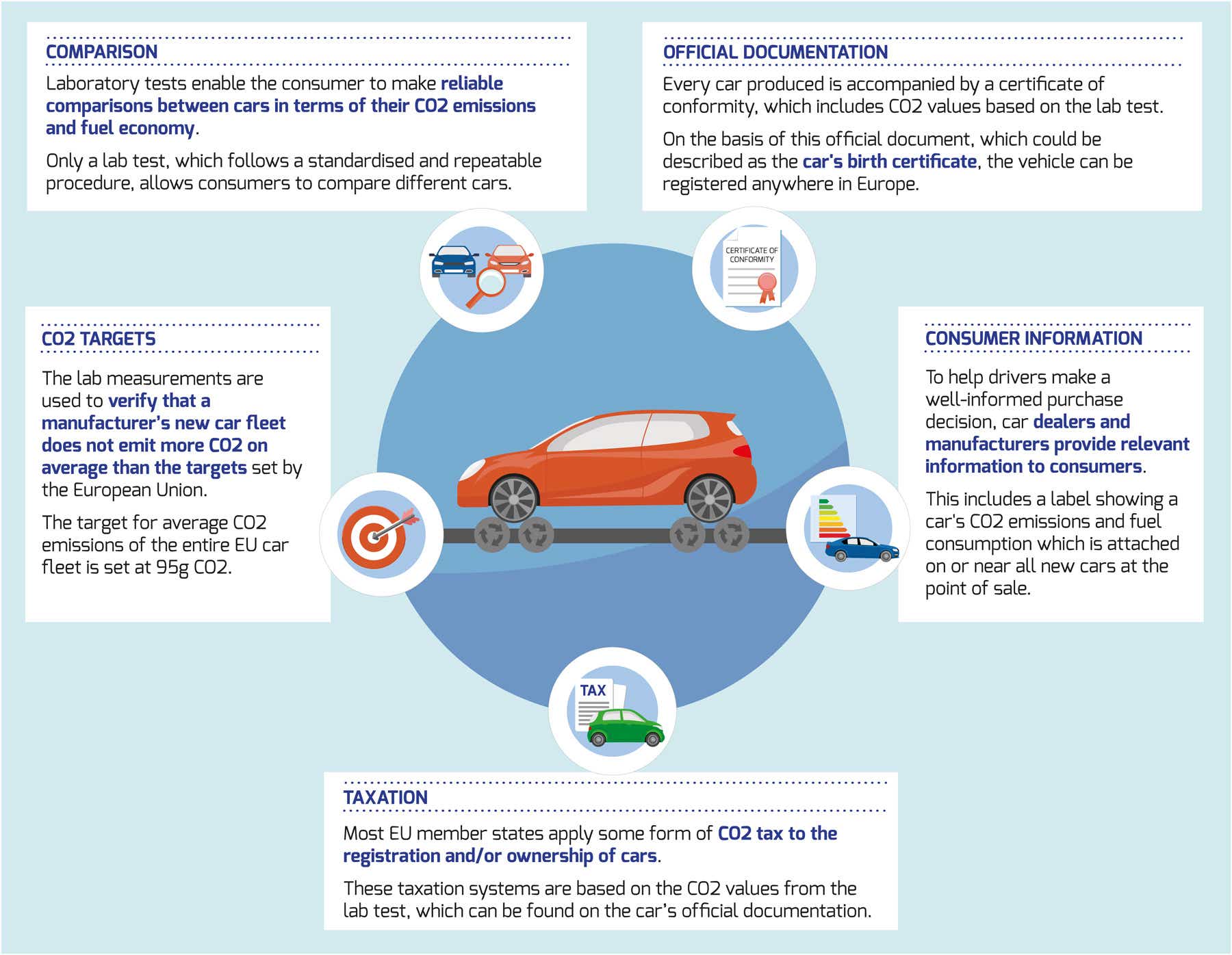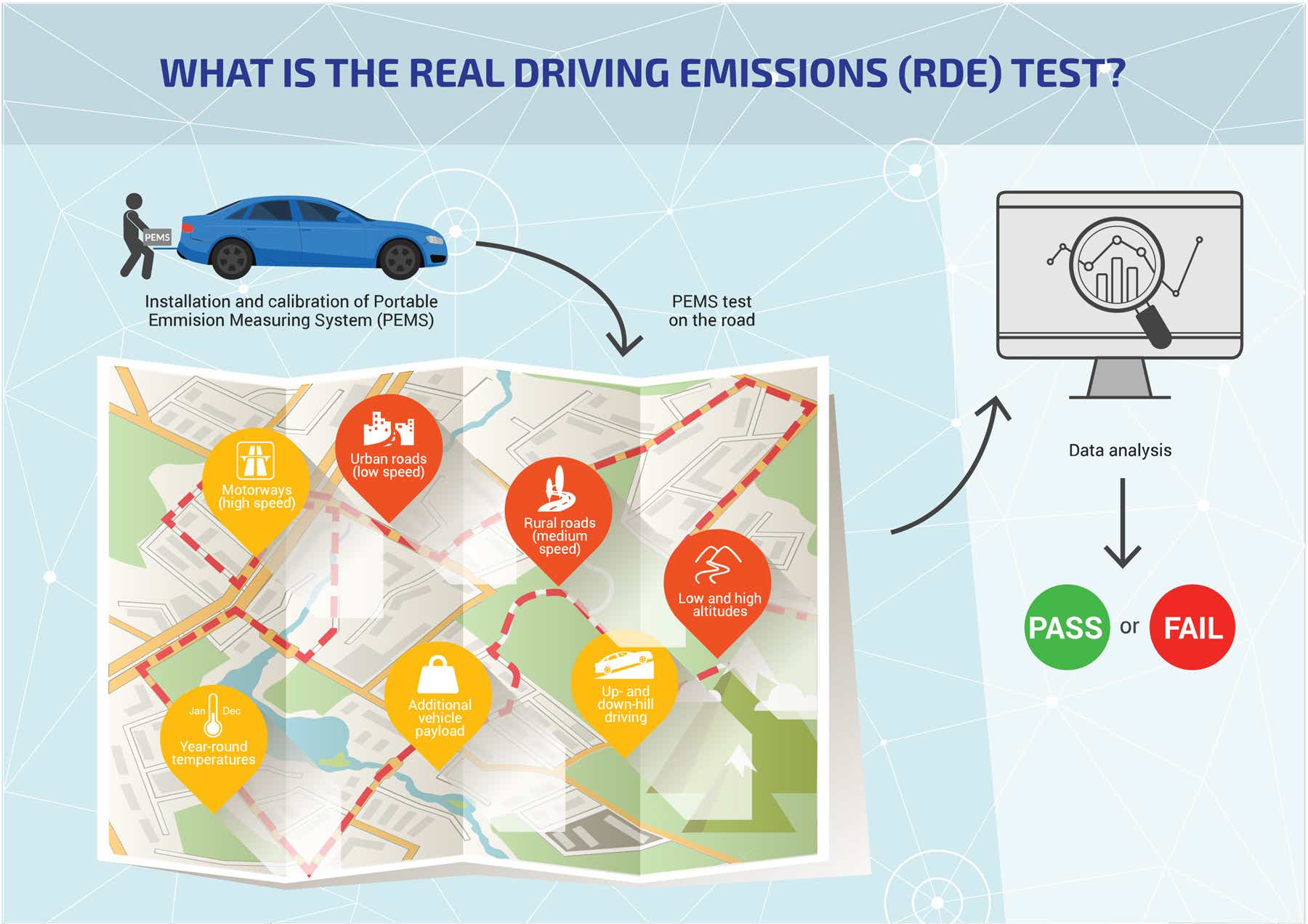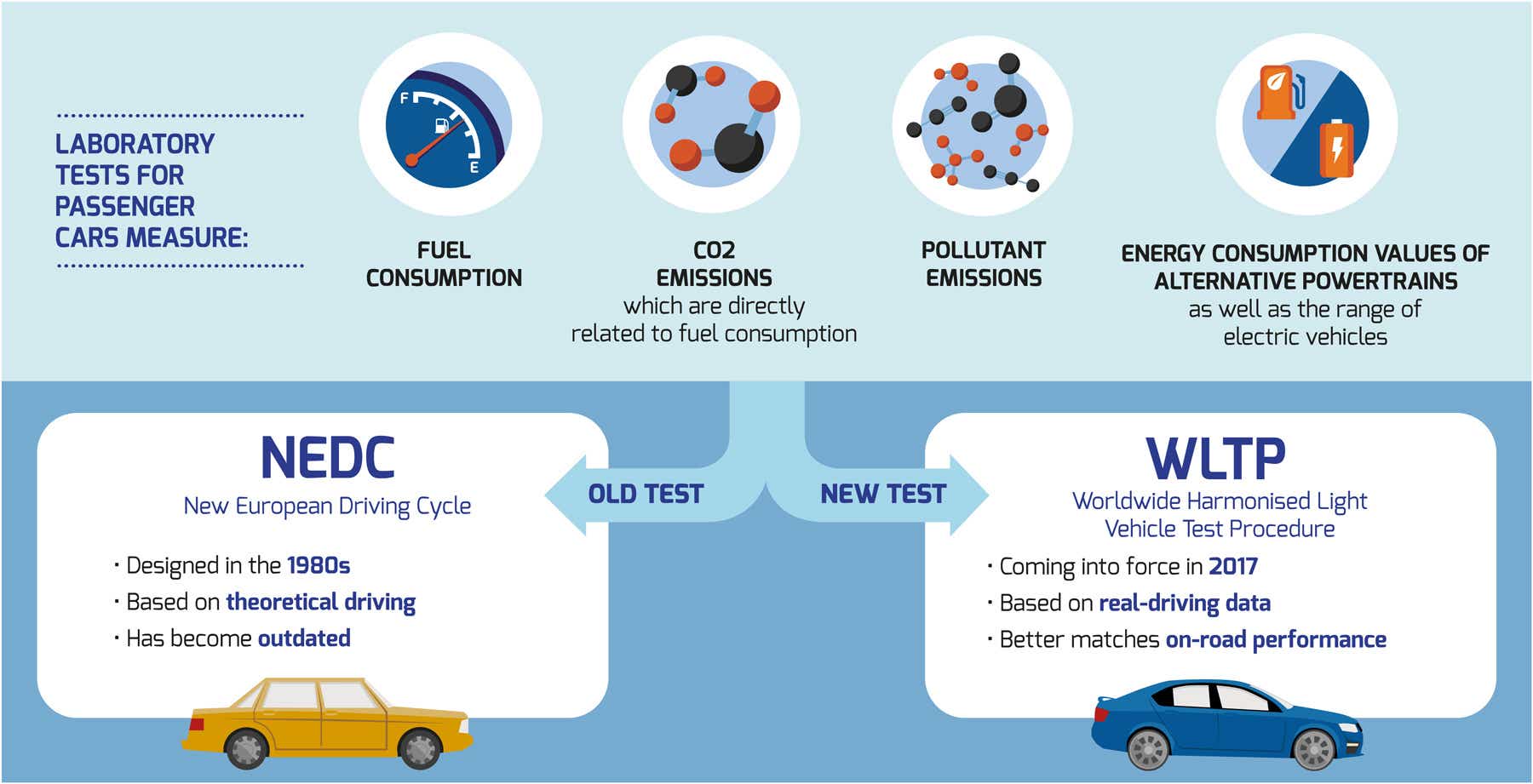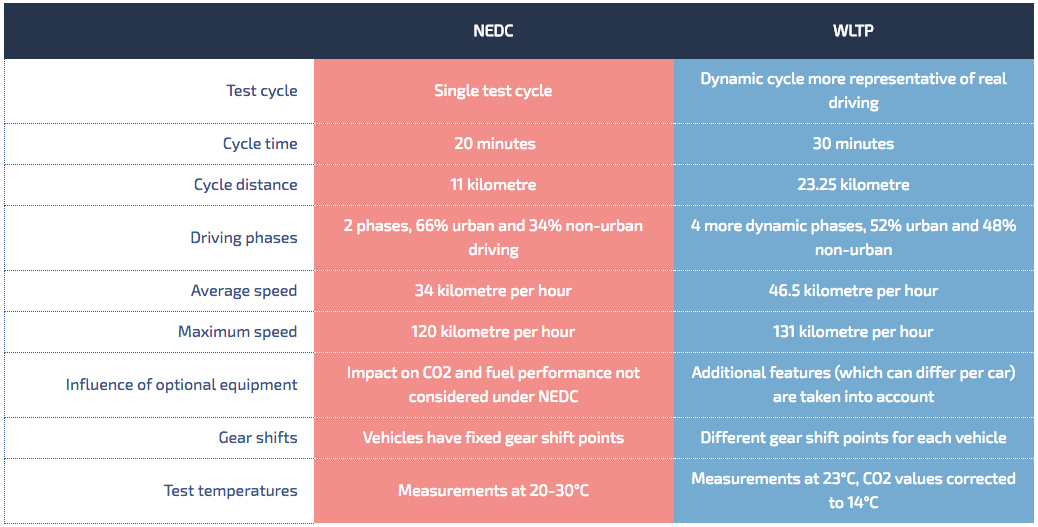Introducing the WLTP

What is WLTP?
Under conditions defined by EU law, the Worldwide Harmonized Light Vehicle Test Procedure (WLTP) laboratory test is used to measure fuel consumption and CO2 emissions from passenger cars as well as their pollutant emissions.
The old lab test – called the New European Driving Cycle (NEDC) – was designed in the 1980s. Due to evolutions in technology and driving conditions, it became outdated. The European Union has therefore developed a new test, called the Worldwide Harmonised Light Vehicle Test Procedure (WLTP). The EU automobile industry welcomes the shift to WLTP and has actively contributed to the development of this new test cycle.

What’s the difference between NEDC and WLTP?
While the old NEDC test determined test values based on a theoretical driving profile, the WLTP cycle was developed using real-driving data, gathered from around the world. WLTP therefore better represents everyday driving profiles.
The WLTP driving cycle is divided into four parts with different average speeds: low, medium, high and extra high. Each part contains a variety of driving phases, stops, acceleration and braking phases. For a certain car type, each powertrain configuration is tested with WLTP for the car’s lightest (most economical) and heaviest (least economical) version.
WLTP was developed with the aim of being used as a global test cycle across different world regions, so pollutant and CO2 emissions as well as fuel consumption values would be comparable worldwide. However, while the WLTP has a common global ‘core’, the European Union and other regions will apply the test in different ways depending on their road traffic laws and needs.


The benefits of WLTP
WLTP will introduce much more realistic testing conditions. These include:
- More realistic driving behaviour
- A greater range of driving situations (urban, suburban, main road, motorway)
- Longer test distances
- More realistic ambient temperatures, closer to the European average
- Higher average and maximum speeds
- Higher average and maximum drive power
- More dynamic and representative accelerations and decelerations
- Shorter stops
- Optional equipment: CO2 values and fuel consumption are provided for individual vehicles as built
- Stricter car set-up and measurement conditions
- Enables best and worst-case values on consumer information, reflecting the options available for similar car models
Because of all these improvements, WLTP
will provide a much more accurate basis for
calculating a car’s fuel consumption and
emissions. This will ensure that lab measurements
better reflect the on-road performance of a car.
Transitioning from NEDC to WLTP
- WLTP will officially apply to new types of cars from September 2017. New types of cars are vehicle models that are introduced on the market for the first time.
- Manufacturers may already start requesting WLTP approvals for new car types when the legislation comes into force in the European Union (no sooner than end July 2017).
- WLTP will apply to all new car registrations from September 2018.
- From 1 January 2019, all cars in dealerships should have WLTP-CO2 values only to avoid any confusion among consumers, in the view of the automobile industry
- EU measures for end-of-series cars should allow for a limited number of unsold vehicles in stock that were approved under the old test (NEDC) to be sold the following year, that is until September 2019.
The Real Driving Emissions (RDE) test
The Real Driving Emissions (RDE) test measures the pollutants, such as NOx emitted by cars while driven on the road. RDE does not replace the WLTP laboratory test, but complements it. RDE ensures that cars deliver low emissions over all on-road conditions. Europe is the first region in the world to introduce such on-road testing, marking a major leap in the testing of car emissions.
Conditions include:
- Low and high altitudes
- Year-round temperatures
- Additional vehicle payload
- Up- and down-hill driving
- Urban roads (low speed)
- Rural roads (medium speed)
- Motorways (high speed)